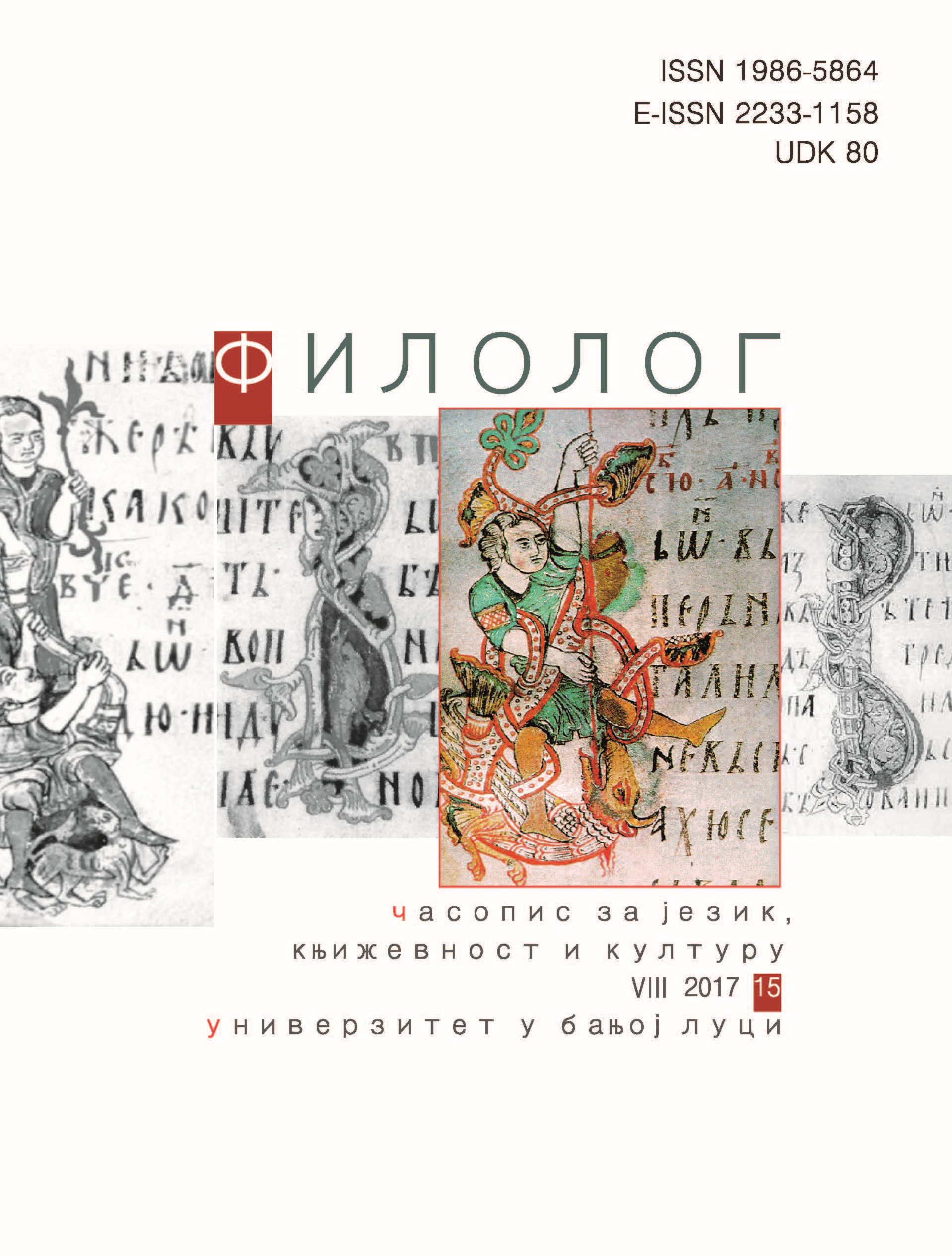Лични метадискурс у писању код изворних и неизворних говорника енглеског језика
Personal Metadiscourse in the Writing of Native and Non-Native Speakers of English
Author(s): Jelena M. MarkovićSubject(s): Foreign languages learning, Syntax, Comparative Linguistics, Philology
Published by: Филолошки факултет Универзитета у Бањој Луци
Keywords: native speaker; non-native speaker; personal metadiscourse; function; Contrastive Interlanguage Analysis; personal pronouns;
Summary/Abstract: This paper focuses on the personal metadiscourse in argumentative writing in English as a foreign language. The general theoretical model of the metadiscourse is taken from Ädel (2006). This model is primarily functional. Namely, what is essential in the identification of the metadiscourse is a metalinguistic function in combination with expressive or directive functions. Among the functions identified, Ädel recognises basically two broad types: primarily textual functions and functions building the writerreader relationship. In this paper, we focus on the second type in the personal form, which means that the metadiscourse in focus necessarily includes the personal pronouns I, we, or you, being explicit formal markers of the writer-reader relationship.The analysis includes two corpora: the native (K1) and the nonnative (K2) students’ argumentative essays. The two corpora possess numerous features in common, which is a prerequisite for comparability. Their basic difference is the L1 background, since K2 is wholly composed of essays written by EFL students, who are native speakers of Serbian. Using the applicable software, first we identified and compared the frequencies of the personal pronouns in question in the two corpora. The results show that the pronouns are used five times more frequently in K2 on average. The most striking difference is the frequency of the second person pronoun you, which is rare in K1, unlike K2, which uses it extensively. The analysis of six personal metadiscourse functions in accordance with the classification in Ädel (2006) yields important results. Namely, K1 possesses some examples of half of the functions, whereas examples of the predominantly directive roles are rare. On the other hand, K2 possesses numerous examples of all the six functions, including the dominantly expressive and directive ones. The most frequent are instances of personal metadiscourse in the function of Aligning Perspectives, which is in accordance with the Serbian tradition of using the first person plural pronoun in academic texts.To conclude, we can say that K2 exhibits numerous and insightful examples of personal metadiscourse used to build the reader-writer relationship, unlike K1. The results are expected, especially because the two writing traditions generally differ considerably, as has been shown in contrastive research so far. In other words, what has become obvious is that the writing habits in L1 referring to the writer-reader relationship are easily transferred to the L2 writing skills. Nevertheless, such a transfer need not be objected to on the condition that it enhances communication via written discourse.
Journal: Филолог – часопис за језик, књижевност и културу
- Issue Year: 2017
- Issue No: 15
- Page Range: 44-60
- Page Count: 17
- Language: Serbian

